http://english.ahram.org.eg/NewsContent/9/40/326562/Heritage/Ancient-Egypt/Egypt-completes-groundwater-lowering-project-at-Al.aspx
Egypt completes groundwater lowering project at Alexandria catacombs
The projects comes within the framework of mutual collaboration and partnership between Egypt and the United States to preserve Egypt's archaeological heritage as well as restore, preserve and protect world-class monuments
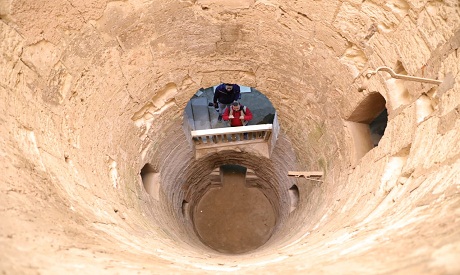
Minister of Antiquities Khaled El-Enany said, "as we are celebrating today the completion of the groundwater lowering project for the Catacombs of Kom El-Shuqafa in Alexandria, we will also celebrate the completion of the Kom Ombo Temple groundwater lowering project in one month."
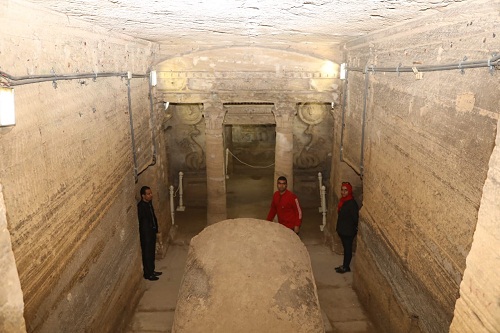
Both projects, according to the minister, come within the framework of mutual collaboration and partnership between Egypt and the United States to preserve Egypt's archaeological heritage as well as restore, preserve and protect world-class monuments for future generations.
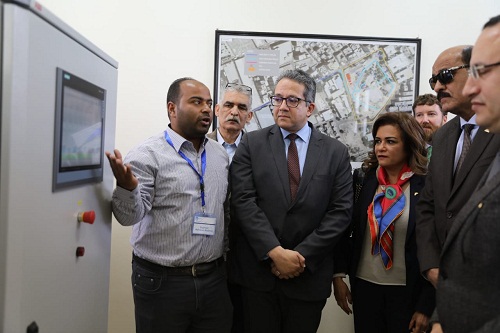
Kom El-Shuqafa catacombs in Alexandria were suffering damage caused by the infiltration of groundwater into their lower level.
Several efforts were previously exerted to lower the groundwater level and prevent leakage into the catacombs.
The most recent efforts were carried out in the 1990s, when a number of pumps were installed to reduce the water levels, but the high humidity, caused by the nearby Mahmoudiya Canal, and increased urban development continued to cause flaking of the bedrock that damaged relief decorations and caused the growth of green algae.
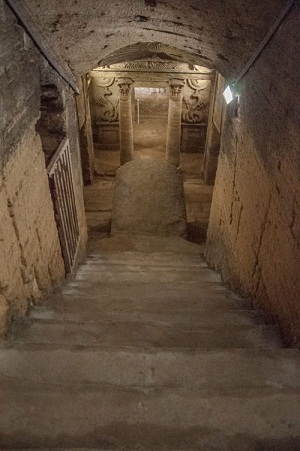
With a USAID grant of $5.7 million, the Ministry of Antiquities – in collaboration with NAPWAS, the CDM Smith and AAW– has succeeded in fixing the problem through the implementation of Kom El-Shuqafa groundwater lowering project.
Meanwhile, Egyptian restorers have completed a comprehensive reconstruction and conservation project for tombs no 989 and no 990 in the catacombs. Work at tomb no 989 started in November 2017 and lasted for one year, while work at tomb no 990 began in February 2019 and is still awaiting the reconstruction of its ceiling and front pillars.
Mostafa Waziri, General Secretary of the Supreme Council of Antiquities, explains that the project started in November 2017 and aims to reduce the groundwater level on site and protect the tombs from any damage caused by the leakage. This was achieved through providing a technical system to draw down the water level.
Waziri pointed out that the accumulation of rain water has also had negative effects.
To protect the tombs, said Engineer Waadala Abul El-Assasif, head of the Projects Sector, six 40-metre-deep wells were dug and a number of electronic pumps were installed along with drainage pipes.
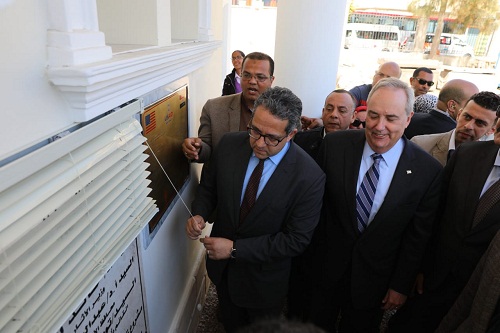
He asserted that the ministry carried out the project after carrying out all required studies.
El-Assasif added that Kom El-Shuqafa archaeological site has suffered from rising groundwater since its discovery, and that the lower level of the site was submerged with water, prompting the ministry to launch a project to establish drainage wells at a depth of 20 metres as a preliminary solution until the completion of the necessary studies before the start of the project.
Kom El-Shuqafa is considered one of the important examples of Roman funerary architecture as it was dug of a series of catacombs, dug three levels into the ground. The cemetery was used in the second half of the first century AD and continued its role as a grave until the fourth century AD.
Waziri mentioned that a development project that aims to convert the Kom El-Shuqafa archaeological site into an open-air museum will involve the creation of a new display scheme for its artefacts. A visitors' route will be also provided.
The necropolis consists of a series of Alexandrian tombs, statues and archaeological objects of the Pharaonic funeral cult with Hellenistic and early imperial Roman influences.
Another feature of the catacombs is the Hall of Caracalla; tombs created for the horses of the Roman Emperor Caracalla in 215 AD.
-- Sent from my Linux system.
No comments:
Post a Comment